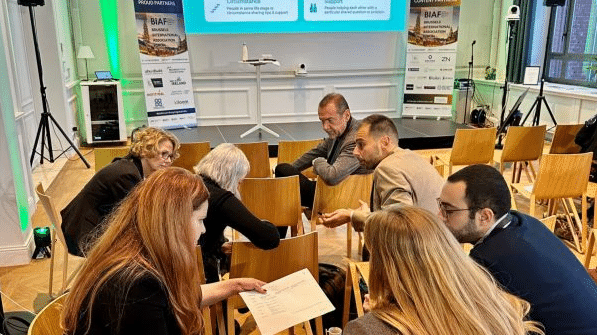10 tips for building a thriving online community
Want to read the original Dutch version? Go to DNA’s Knowledge Bank. Note: You will need a DNA account to read the article.
You want to build a online community with your members. Way to go! After all, connecting members is a core task of your association, also digitally. Here are some tips on how best to approach this:
1. Develop a strategy
Take a step back and think outside the box: What would my association look like if I had to set it up now from scratch? Where would I start? Answer the key question for a successful community strategy: ‘How can my members help each other?’
2. Ensure relevance to both your target audience and your association
Delving into the needs of your target group is crucial when building an online community. Think about questions such as: what are members currently struggling with? How can an online community platform help facilitate those needs? But also: how will the online platform help your association organise processes more efficiently digitally? What interesting information does your organisation want to get from the community? Involve all departments of your organisation in this, to ensure full buy-in.
3. Build the community together with your most active members
Who always fills in your surveys, comes up with questions, has a volunteer role or shares your association’s content? These members need to start carrying your community. The awkward truth about communities is that success is likely to hang upon a few highly motivated members. Focus on them primarily, instead of the inactive majority.
4. Get commitment from the board, management and your entire organisation
Successful communities are built bottom-up, instead of top-down. Community thinking is a mindset and sometimes requires behavioural and cultural change. If the added value of an online community is not recognised by the entire organisation, the added value of the community will be smaller and is more likely to fail. In any case, make sure you have a community manager and a substantial group of ambassadors who are passionate about getting the community off the ground.
5. Consider your organisation’s position within your sector’s ecosystem
Many professional and industry associations fight to be at the centre of their ecosystem. But you can’t just think of your own services in isolation. A successful community strategy requires organisations to put their (potential) members first and think more in terms of collaboration and partnerships to serve them best. A good example of this is TVVL Connect. What started as a knowledge platform of industry organisation TVVL has grown into a public knowledge platform for the entire installation sector under the name KUBR. It is now jointly facilitated by all sister organisations in the sector.
6. Facilitate and amplify your association member’s existing culture
An online community on a dedicated platform provides a safe and central online environment to connect members under the trusted banner of your association. You can use it to facilitate and amplify your members existing culture, habits and rituals. This increases your member’s feeling of belonging, which leads to more active members, more collaboration and more impact.
7. Find and cultivate common denominators
Facilitate existing collaborations such as working groups, committees and regional groups in a central online place. Let these groups inspire each other to work better together in the online community.
8. Consider offering a digital marketplace for your sector as part of your online community
Furniture industry organisation CBM, for example, matches supply and demand for staff and raw materials. Many associations offer a job board as part of their digital community. How can you match supply and demand in your community?
9. Take your time, opt for organic growth
You don’t build an online community in a week or a month; it takes time. And that’s why you need to invest in it over a longer period.
10. Keep it simple
Limit the features, because the simpler, the better. By limiting the number of features, participants quickly find what they are looking for. This is the secret behind a successful online community platform like “Een tweetje” from the Dutch Soccer Association (KNVB), which is simply built around asking and answering questions. The online community should be simple to use and easily accessible: the ‘association in your pocket’, as we call it. The ease of use should be similar to commonly used digital tools like LinkedIn and banking apps.
Bonus tip
Hire a community strategist who specialises in your type of organisation. This expert will prevent you from having to reinvent the wheel, can provide inspiring examples and templates to guide the process in the right direction and help you to get the most out of your investment in your online community.
By: Mathijs Vleeming, Consultant Associations at Yard Digital Agency. Get in touch.
Also read

How can your community platform help your association provide its core tasks?

Member Engagement and the Changing Role of Associations [3/5]

